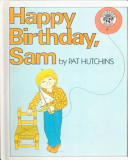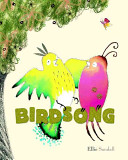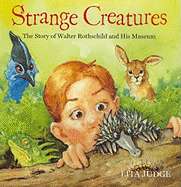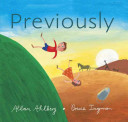
When Pooh invites all his friends to a birthday party for Piglet, he has a hard time cleaning up after everyone goes home.

When Pooh invites all his friends to a birthday party for Piglet, he has a hard time cleaning up after everyone goes home.

A child’s-eye view of London’s top attractions blends lively artwork with fascinating facts, and features a sweeping gatefold of the city skyline. London is calling! Come along on a mother-daughter day trip as they wend their way past the changing of the guard at Buckingham Palace, through Trafalgar Square, and on to Covent Garden. Listen closely and you might just learn a secret about the Whispering Gallery in Saint Paul’s Cathedral. Then it’s on to the Tower of London and the river Thames, where a fold-out surprise awaits. Readers will be enchanted by Salvatore Rubbino’s cheerful, sophisticated illustrations and abundant trivia about the one and only city of London.

Chameleon can turn himself into anything and appear to fit in anywhere, but it seems that neither the swirly snail, the green grasshopper nor the striped sock want to be friends. Will he ever find someone to talk to? Someone just like him? With a subtle and witty interplay between words and illustrations this introduction to colors and shapes (and chameleons!) is sure to delight kids of all ages.

In rhyming verse, mothers and their babies are described sharing in a variety of activities, from playing at the ocean to reading books and taking a bath. The mothers and children represent a wide range of ethnic backgrounds, ages, and sizes, reflecting the diversity of mamas and kids everywhere.

This is for all children who believe getting older means growing bigger. Conveys that resourcefulness, not inches, is what does the trick.

A lone bird sits in a big tree, merrily singing its tune to the world. But soon it will be joined by a friend, and then another, and another. . . . As each colorful bird lands on the branch of the tree it joins the last in a cheerful song. But one flashy bird wants to rule the roost – until something small changes his tune.

Where do Tiggers come from? What do they like to eat? What sort of games do they play? Find out in this sweet, affordable storybook featuring Tigger, Pooh, and all the other friends who live in the Hundred Acre Wood.

Walter, the son of Lady Emma and Lord Nathan Rothschild, was a very unusual boy. He was born in 1868 to a family of bankers and was nearly the richest boy in the world. But that’s not what made him unusual. Walter was so shy he barely spoke. He had no friends, but he loved every creature that crawled, slithered or flew. At the age of seven he saw his first circus and was inspired to declare breathlessly to his parents: “I’m going to collect animals from all over the world and build a museum and I’m going to call it My Museum!” The family knew explorers who traveled the world to bring back animals for the London Zoo, and soon Walter had his first exotic creatures: several kangaroos. From there his collection grew and grew, until it threatened to take over the Rothschild estate. Lord Rothschild eventually lost patience with Walter’s hobby and insisted that Walter become a banker, like everyone else in the family. Reluctantly, Walter obeyed, but his dream couldn’t be dimmed–he used his earnings to purchase species from undiscovered lands. Eventually Walter created the largest zoological collection gathered by one man and was respected throughout the world for his contribution to science. He wrote 1200 books and scientific papers and named 5000 new species. Animals that now bear the name Rothschild include butterflies, fish, a millipede, a fly, a lizard, a porcupine, a wallaby, a bird of paradise, and even a giraffe. The painfully shy boy who never made a good banker forever changed our understanding of the world’s diversity of creatures.

The adventures of various nursery rhyme and fairy tale characters are retold in backward sequence with each tale interrelated to the other. Includes Goldilocks, Jack and the beanstalk, Jack and Jill, the frog prince, Cinderella, and the gingerbread man.

I love my mommy very much, She’s great to cuddle, soft to touch. Wonderfully child-like verses about everything that makes mothers special are illustrated with bold and bright pictures in this life-affirming book. Toddler-friendly, funny, and loving, this is an experience to be shared time and time again.